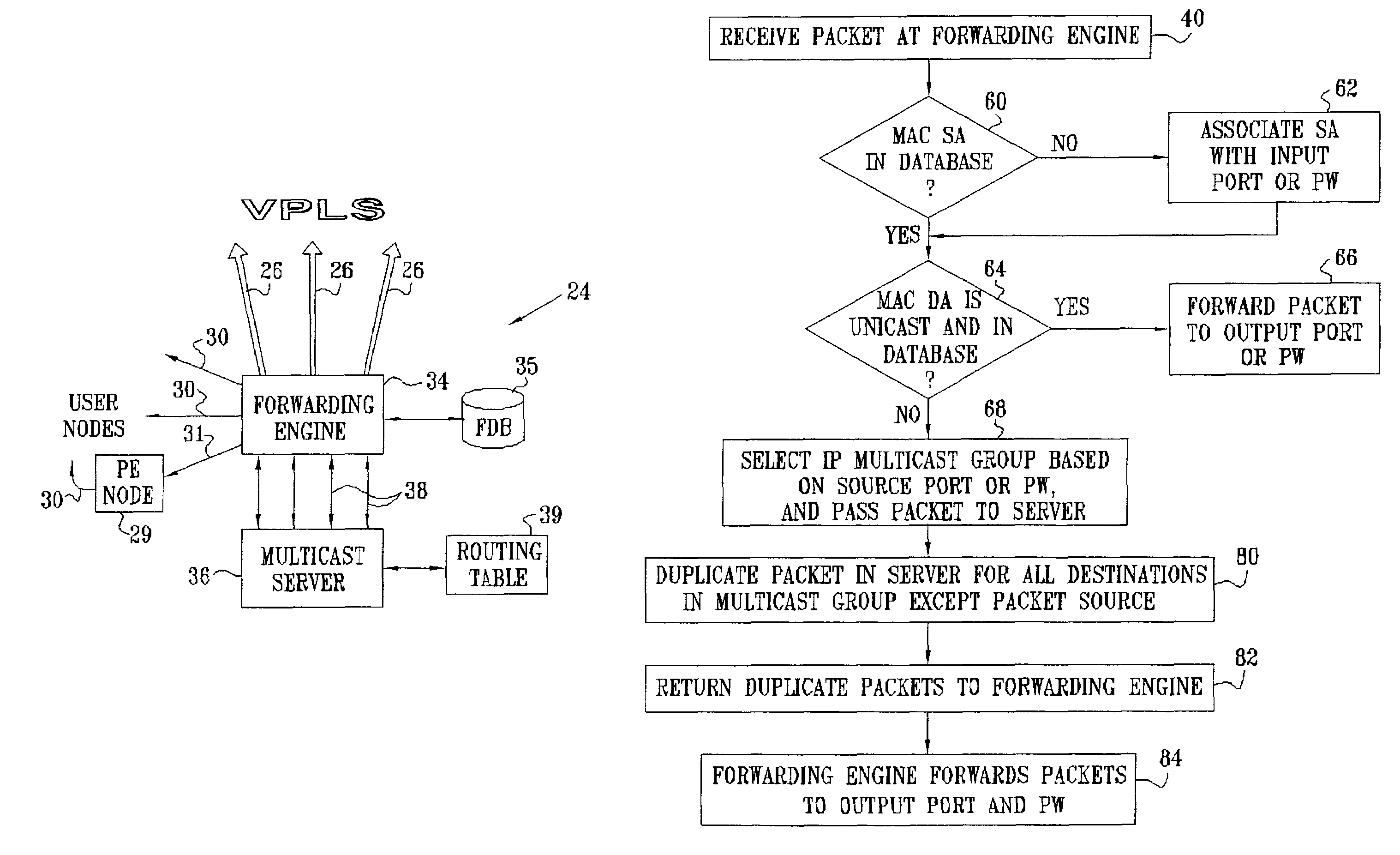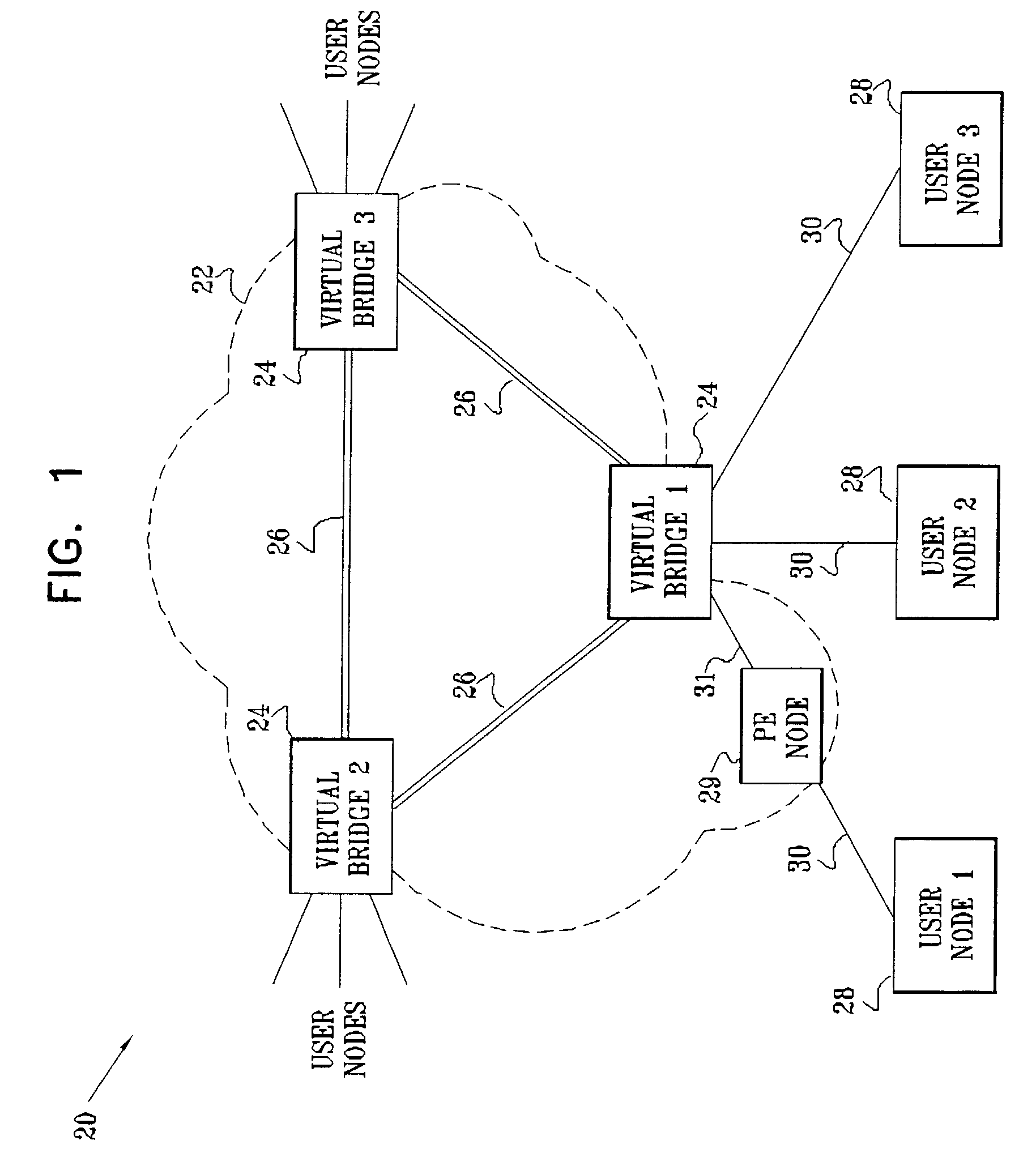Virtual private LAN service using a multicast protocol
- Summary
- Abstract
- Description
- Claims
- Application Information
AI Technical Summary
Benefits of technology
Problems solved by technology
Method used
Image
Examples
Embodiment Construction
[0048]FIG. 1 is a block diagram that schematically illustrates a virtual private network (VPN) 20, in accordance with a preferred embodiment of the present invention. VPN 20 is built around a virtual private LAN service (VPLS), operating within a network 22, typically an IP or MPLS network. The VPLS is based on virtual bridges 24, or VPLS-capable PEs, which are connected by PW 26, through network 22. Virtual bridges 24 also have connections either directly to user nodes 28, or CEs, via Ethernet physical interfaces 30, or via virtual PW connections 31 to a “simple” PE node 29, which in turn is connected to the user node via physical interfaces 30. PE node 29 is able to translate physical user Ethernet ports into virtual connections, as specified in the above-mentioned draft by Martini, but does not necessarily perform bridging operations. Typically, a simple PE node provides aggregated access for many users to network 22, and the network includes many such PEs. These PE nodes are omi...
PUM
 Login to View More
Login to View More Abstract
Description
Claims
Application Information
 Login to View More
Login to View More - R&D
- Intellectual Property
- Life Sciences
- Materials
- Tech Scout
- Unparalleled Data Quality
- Higher Quality Content
- 60% Fewer Hallucinations
Browse by: Latest US Patents, China's latest patents, Technical Efficacy Thesaurus, Application Domain, Technology Topic, Popular Technical Reports.
© 2025 PatSnap. All rights reserved.Legal|Privacy policy|Modern Slavery Act Transparency Statement|Sitemap|About US| Contact US: help@patsnap.com



